ContemPLAY Pavilion is coming at you from the students at McGill School of Architecture an extremely complex pavilion done by a team of students for their final year capstone project. The project is designed on the notions of a space for contemplation and playing. The pavilion serves as a gesture within its context as an artifact of sculpture, design, and architecture.
SCHOOL: McGill School of Architecture
STUDENTS: Elisa Costa, Hamza Alhbian,Olga Karpova, Courtney Posel, Simon Bastien, Jason Crow, Shelley Ludman, Dina Safonova, Justin Boulanger, NicolasDemers-Stoddart, Diandra Maselli, Dieter Toews, EvgueniaChevtchenko, Andrew Hruby, Maria Mingallon, Sophie Wilkin
COLLABORATION: F.A.R.M.M. & Maria Mingallon visiting Professor
The ContemPLAY pavilion is meant as a multi-generational artefact that gathers the ideas of contemplation and playing in a single clear gesture. As a socially sustainable public infrastructure that plays with the visual field through form and cladding, it questions the current trend in public space furniture and encroaches in the realm of the abstract sculpture or artefact.
The gesture itself is a three dimensional mobius strip which is supported by a triangular truss. The truss is a combination of plywood and steel elements. The cladding is a visual pattern generated to create a simultaneous moiré and parallax effect. As the public approaches and engages with the pavilion, the visual field is modified and interrupted by the interference created by motion and the two layers of cladding.
The eye continuously covers the never ending surface of the mobius inviting dynamic motion from the user. Within, a bench anchors the project to the ground, allowing for a center seat in a never ending structure. The light filters through the cladding generating an ambiguous relationship between the notions of inside and outside as well as furniture and shelter.
As you move around the pavilion, new interference patterns are continuously created and destroyed though this mechanism of moiré; thus the pavilion creates a responsive, interactive experience.
The simplicity of a half-twist in a ribbon was rendered extremely complex through the doubling and offsetting of the mobius strip: the creation of two surfaces activated the moiré but required strong yet minimal structural solution. Our solution to this complexity was a space frame. To resolve all these design criteria, the moiré pattern and an optimized space frame are generated via customised digital parametric modeling.
All text and Images via:
farmmresearch.com
talkitect.com
evolo.us
http://web.farmmresearch.com/pavilion/desc.html

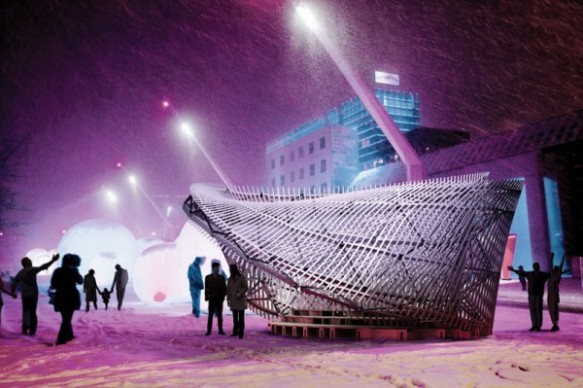

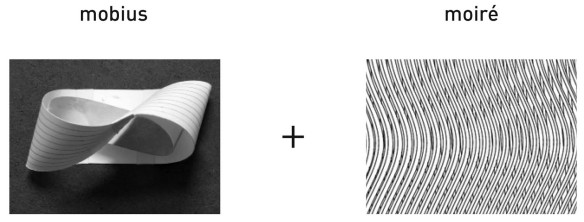
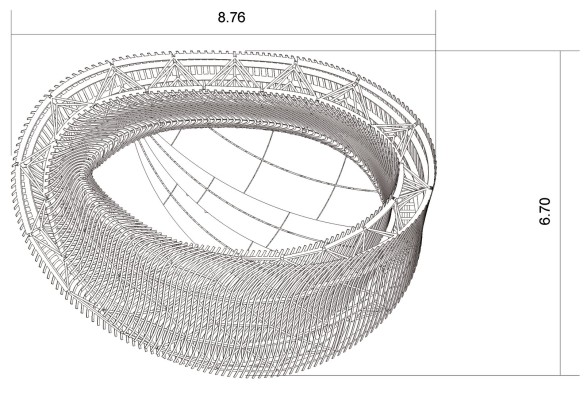
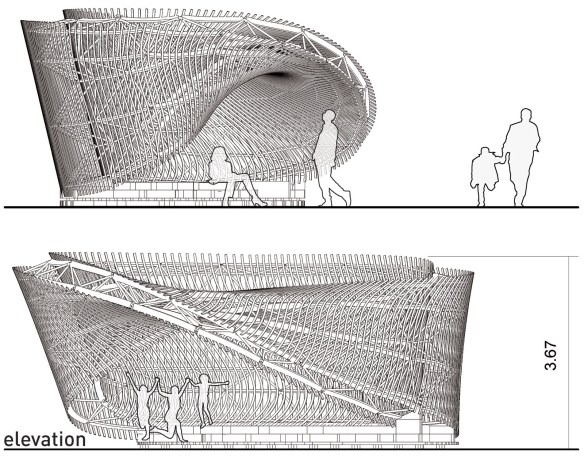


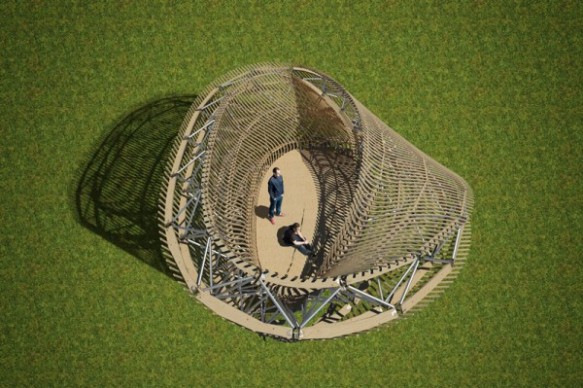

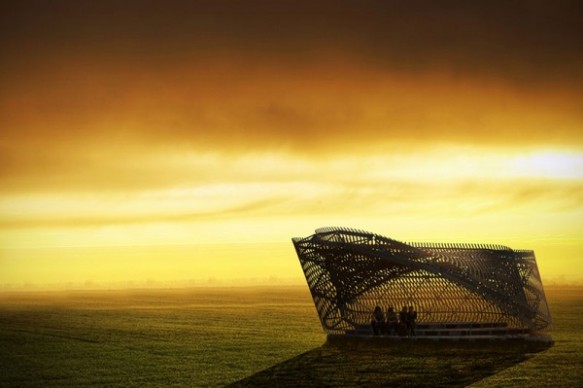
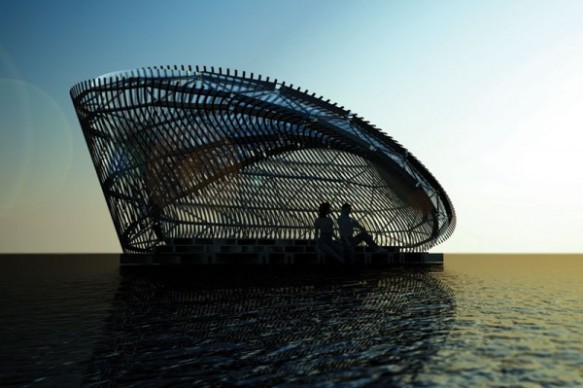
I like this project, with all its opposing qualities: simple programme and complex form; small volume and large impact, delicate detail and robust structure. I’m intrigued: what was the brief for this project? Was there an opportunity at all to attempt to build it in real space, even at scale?
They seem to be right in the middle of production if you follow them on their Facebook page.
Pingback: Futures + Design – Top Posts | FuturesPlus
Reblogged this on Arch 519: Mosque and commented:
This example is obviously a different scale, but I am re-posting it for the notion of the twisting surface that is both wall, roof, and floor. Never ending surface that is continuous.